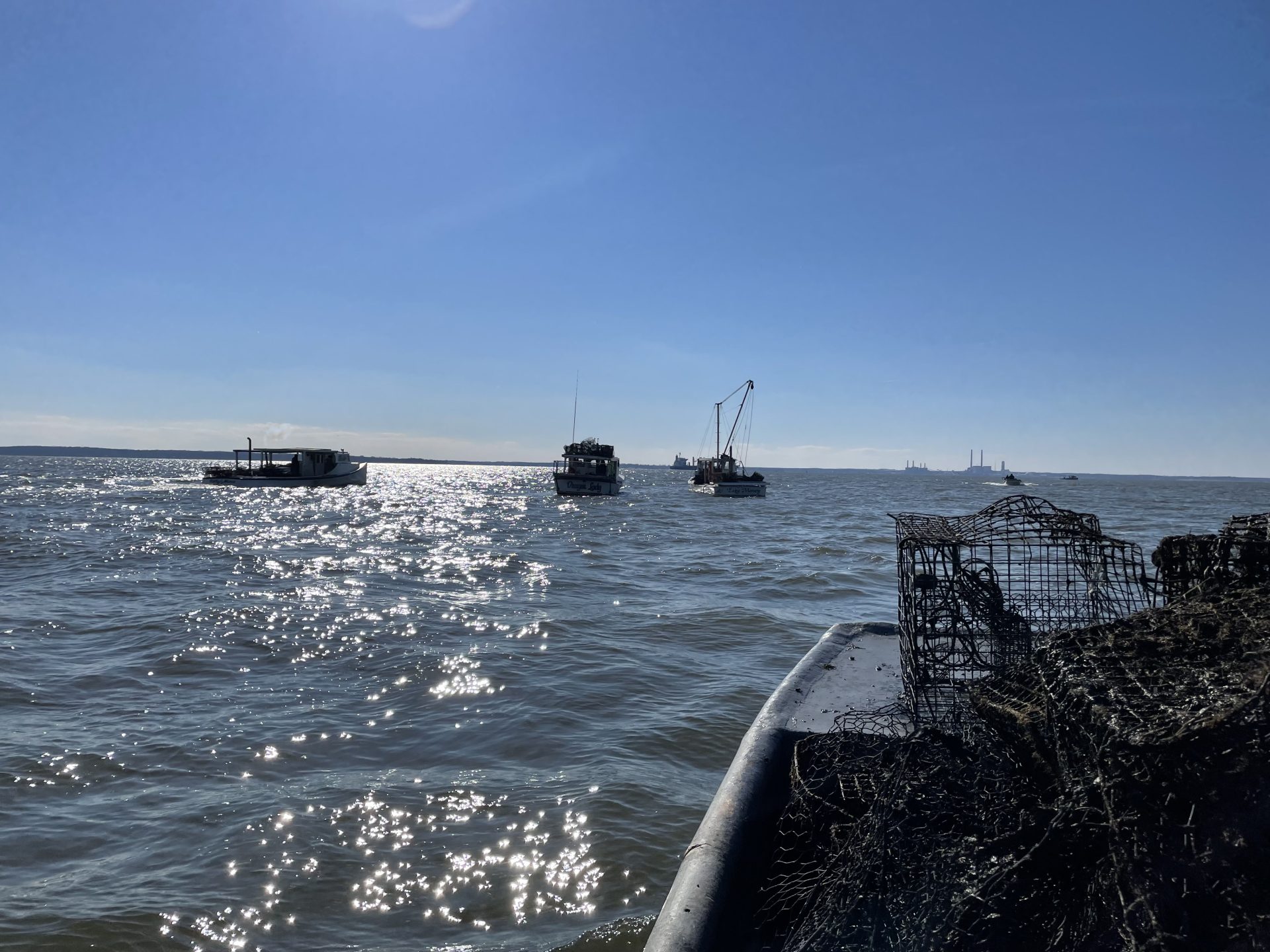

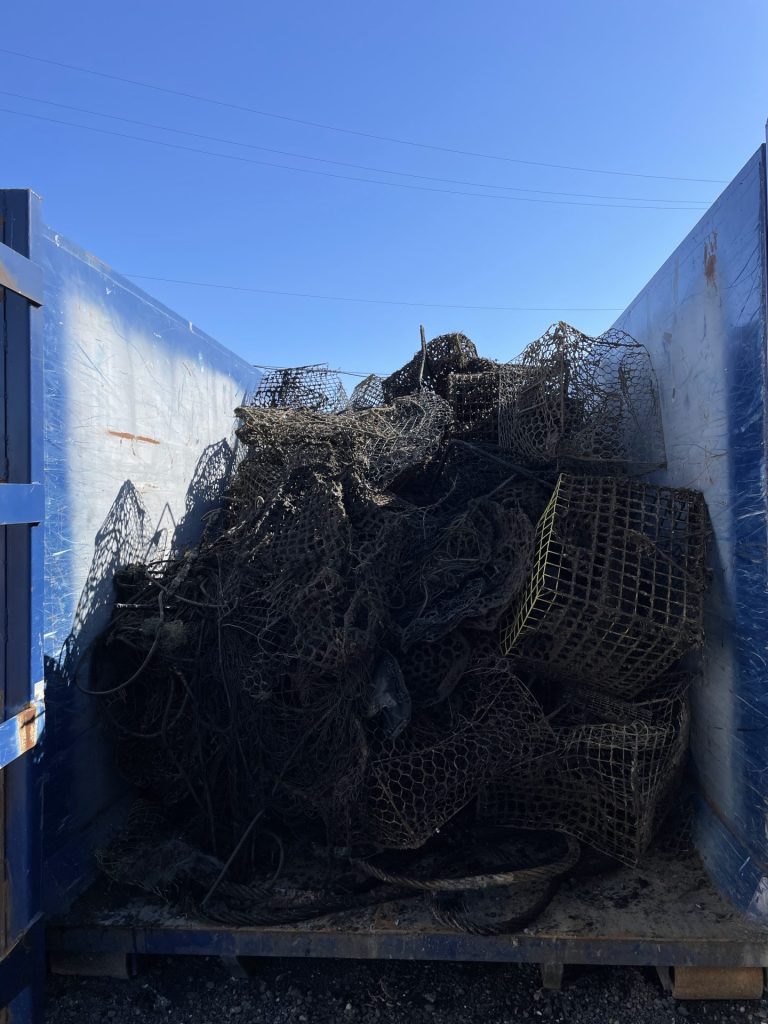
A dumpster begins to fill with derelict crab traps as crews return from the water to unload their gear.
Every year, thousands of blue crab traps are lost in the Chesapeake Bay. Storms, boat traffic, and everyday wear and tear can separate traps from their buoys. Once lost, these derelict or “ghost” traps keep fishing, capturing crabs and other marine life, damaging habitats, and creating hazards for boaters and commercial watermen.
To tackle this problem, ORP has partnered with watermen, the Maryland Department of Natural Resources (DNR), county governments, and other local partners for more than a decade. Together, we have removed over 30,000 pieces of derelict gear from the Bay, improving habitats and supporting a healthy, sustainable blue crab fishery.
In late 2024, ORP received funding from the Nationwide TRAP (Trap Removal, Assessment, and Prevention) Program, which supports efforts across the country to locate and remove lost fishing gear. This funding allowed us to launch a focused cleanup in early 2025, targeting the mouths of the Severn and South Rivers, two high-traffic waterways where derelict crab traps are known to accumulate.
How We Did It
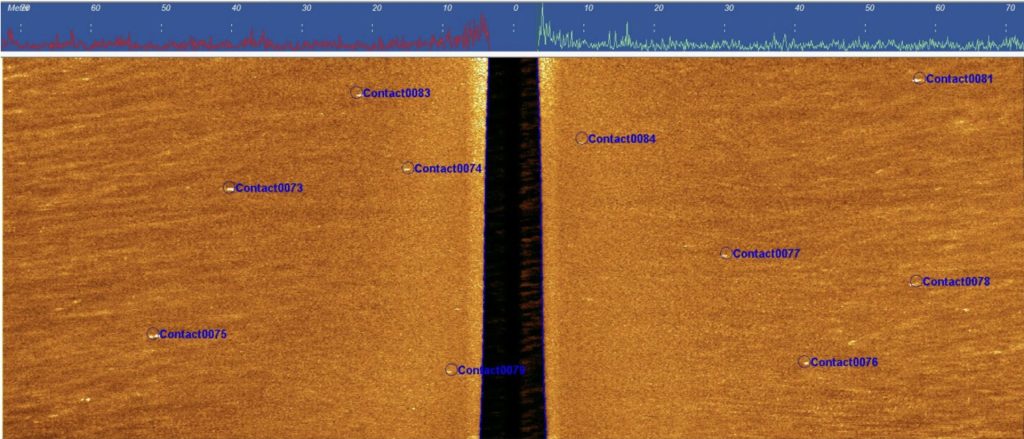
Side-scan sonar imagery shows the Bay bottom in orange, with ten rectangular shapes indicating likely derelict traps. These images help target retrieval efforts.
In 2024, the Maryland Geological Survey conducted side-scan sonar surveys in the rivers to map high-density areas where derelict traps had accumulated. Using this data, ORP worked with DNR, Anne Arundle County, and Discovery Village to plan a five-day, derby-style retrieval operation in March 2025.
Thirteen vessels participated in the effort. Crews spent 8-hour workdays on the water, targeting mapped hotspots to retrieve as much gear as possible using grappling hooks. ORP staff joined watermen on their boats to help document each retrieval and ensure accurate data entry for analysis.
By combining advanced mapping with the on-the-water expertise of watermen, the operation was safer, more efficient, and more productive.
By the Numbers
- 4,700 acres of bay bottom targeted during the cleanup
- 27 commercial crabbers and 6 ORP staff participated
- 926 total derelict pieces of gear removed
– 829 blue crab traps
– 98 other types of gear, including eel pots, nets, rope, tires, and even unusual finds like a weed wacker, a boat propeller, and a beach chair
- 6 species recorded as bycatch, including blue crabs, toadfish, and perch
- 3.28 tons of scrap metal recycled and 0.37 tons of other debris sent to the landfill, with support from Anne Arundel County
Why This Work Matters
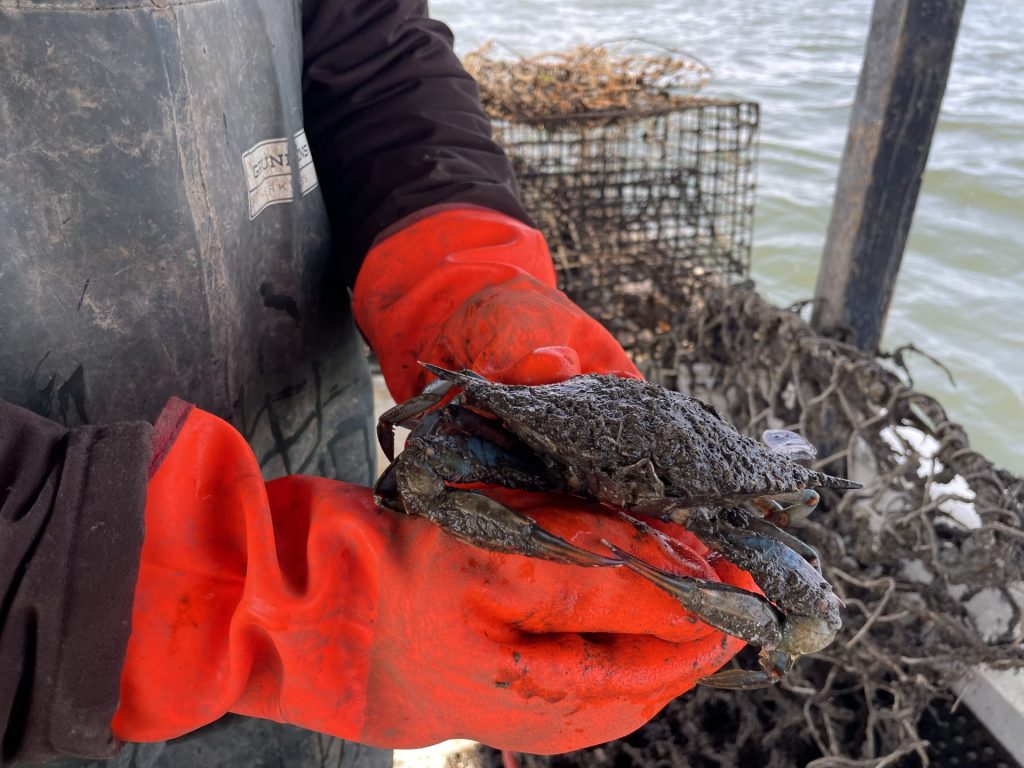
A waterman holds bycatch found in a derelict trap. Many traps continue to capture fish, crabs, and other marine life, often killing what they catch.
Derelict crab traps are more than just debris. They keep fishing long after they’re lost, capturing crabs, finfish, and other marine life, damaging habitats, and creating hazards for boaters. While some derelict gear may provide habitat or structure for small animals, the overall impact can be harmful. Each cleanup helps reduce these risks, provides off-season income for watermen, and strengthens partnerships among watermen, scientists, and managers.
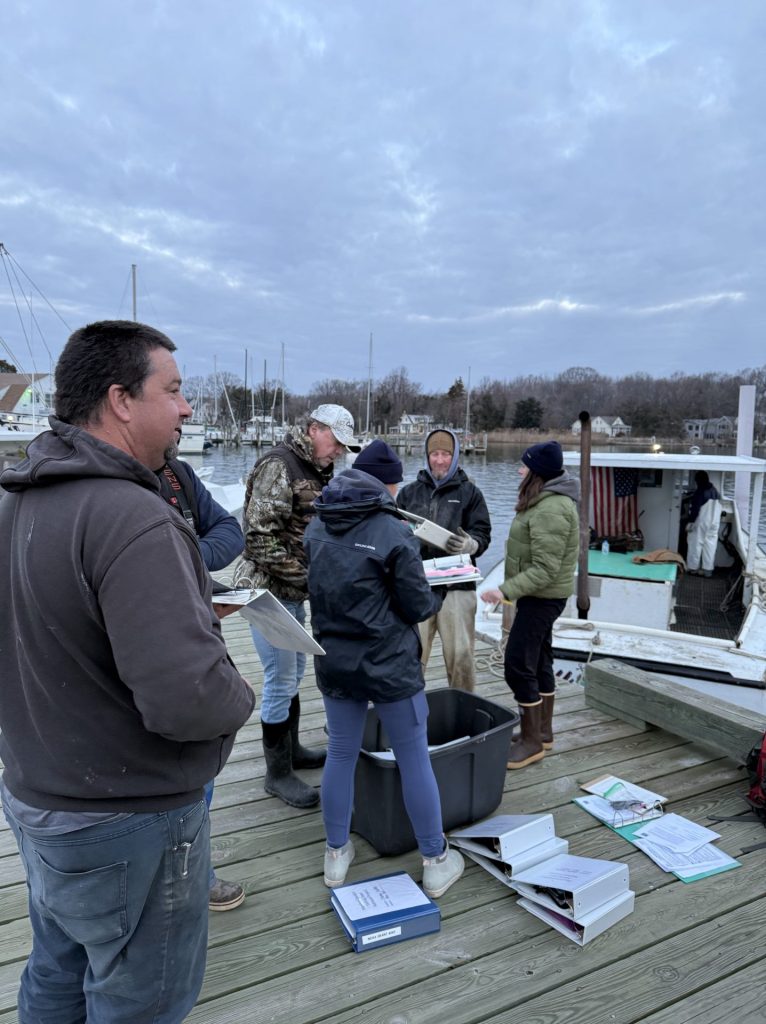
ORP staff brief watermen at the dock each morning, handing out maps and data sheets to track the gear they retrieve throughout the day.
Training and Outreach
This year, ORP also invested in education and training:
- App training: Twelve watermen joined a hands-on training session for the ArcGIS Survey123 TRAP App. This digital tool standardizes how retrievals are logged, making it easier to track results and measure long-term progress.
- Community engagement: ORP participated in more than 20 outreach events, where staff spoke with visitors about this project and other ongoing work. Updates were also shared through e-newsletters, social media, and a WBAL-TV segment, helping more people understand how derelict gear affects the Bay and the collaborative work to remove it.
Looking Ahead
ORP and its partners are working to secure funding to keep this work going. Funding is already in place for a 2026 cleanup in the Baltimore region, with proposals pending to expand efforts elsewhere in the Bay. Each trap removed makes the Bay cleaner, safer, and more sustainable for the ecosystem, the seafood industry, and the communities that depend on both.
